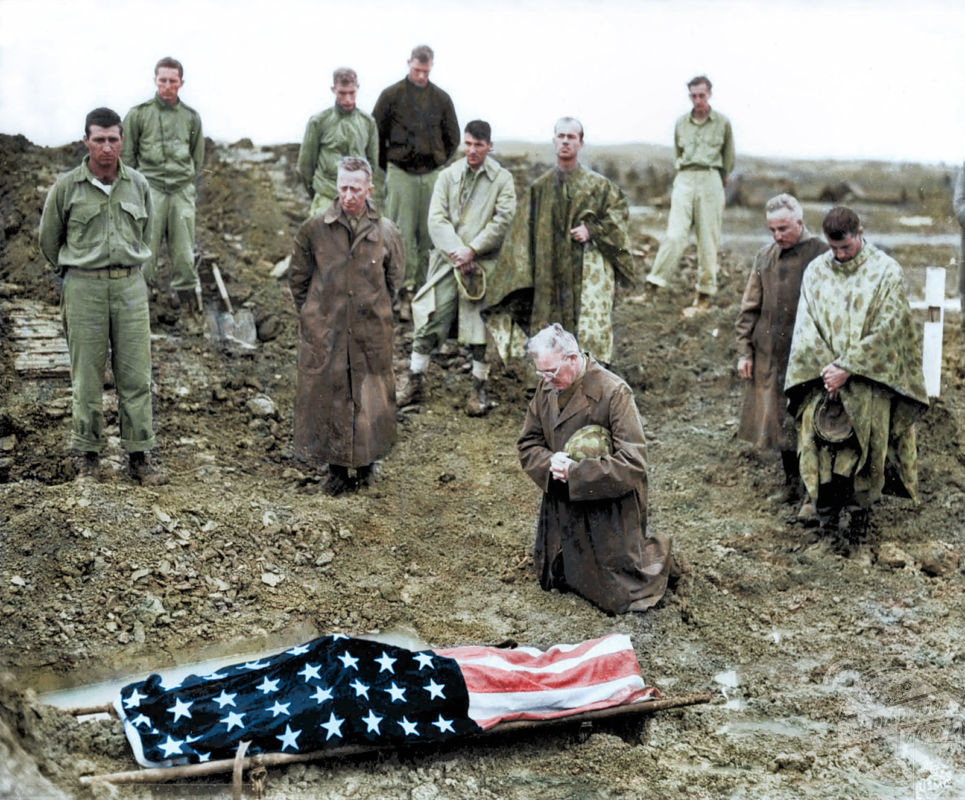
By Alex Jones
THE HORROR of the conflict in the Pacific Theatre during the Second World War has been brought to life in a series of colourised pictures.
The dramatic photos, mainly taken 75 years ago as the war was reaching its climax, were originally captured in black and white but have been painstakingly colourised to realise the true heroism and horrendous conditions where Japanese and American forces clashed.
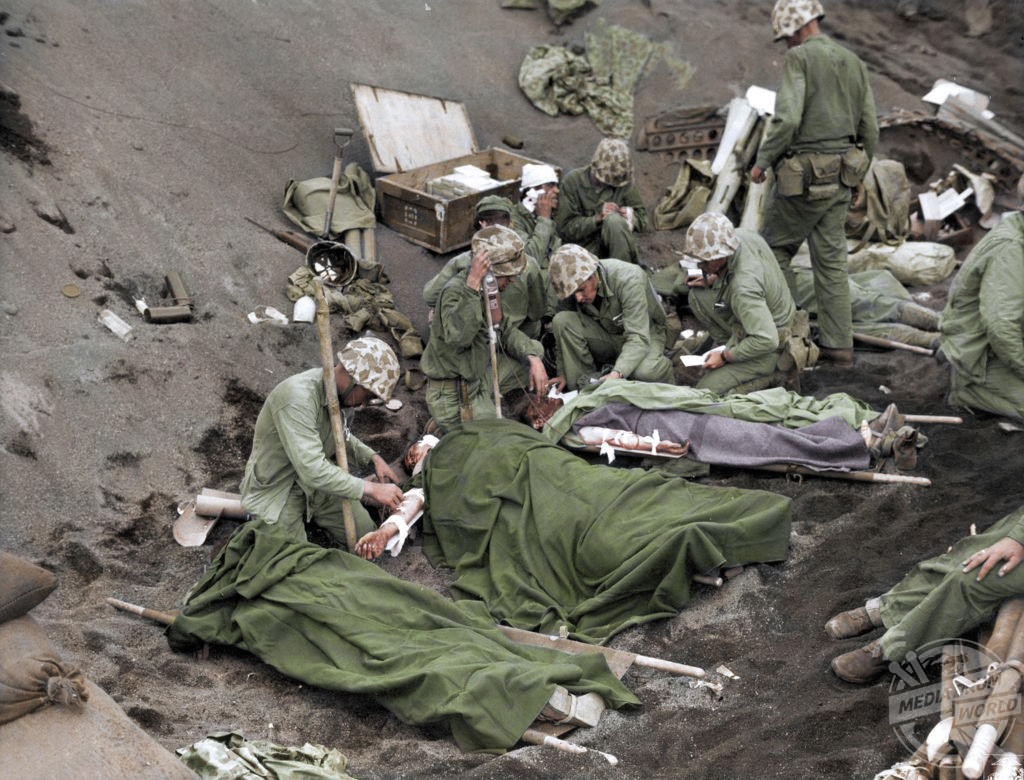
Captivating shots include US Marines injured in the line of duty reaching urgent medical attention, a Japanese soldier surrendering after spending days evading capture, and a troop of soldiers caring for a child orphaned by the brutal fighting.
Another sobering shot shows American servicemen paying their final respects to a lost comrade.
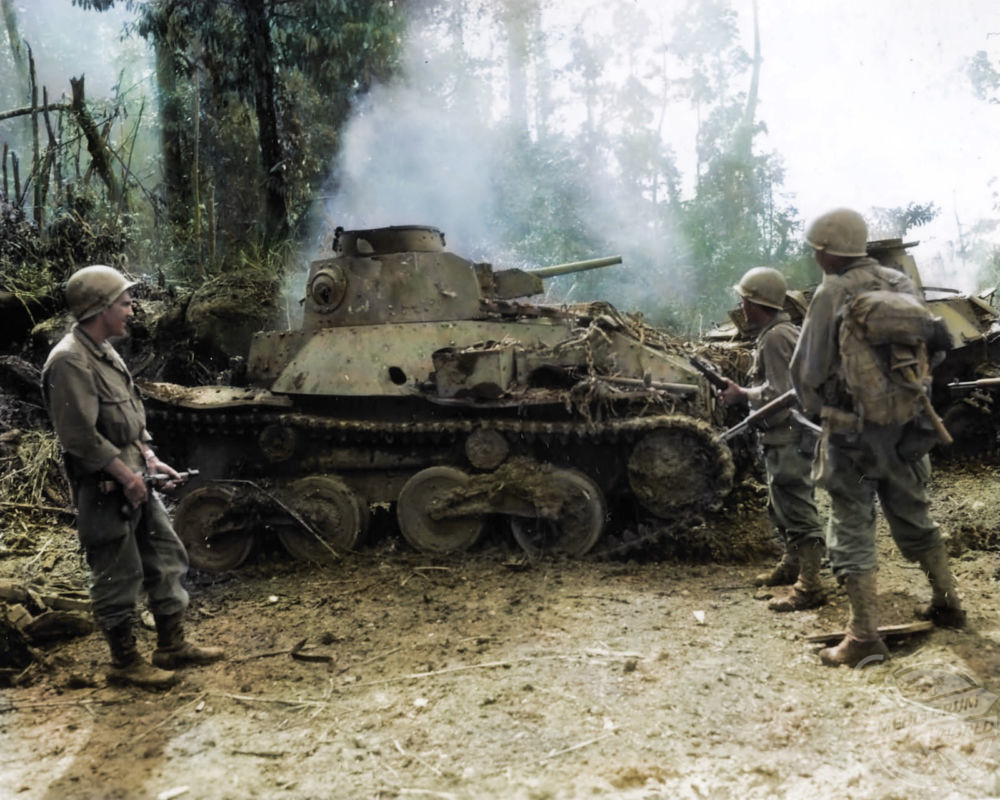
In 1942, the Japanese Empire was operating at the peak of its powers, attacking and occupying positions throughout the Pacific Ocean, ranging from Alaska to India. Japan’s fearless navy and air forces also wreaked havoc on the US Fleet. In a bid to stem the Japanese advance, the US military decided on a strategy of ‘island-hopping’ – fighting for control of strategic islands along a path toward the Japanese home islands, bringing U.S. bombers within range and preparing for a possible invasion. The battles were bloody and conditions for prisoners of war were woeful. Japanese soldiers fought the island landings fiercely, killing many Allied soldiers and sometimes making desperate, last-ditch suicidal attacks.
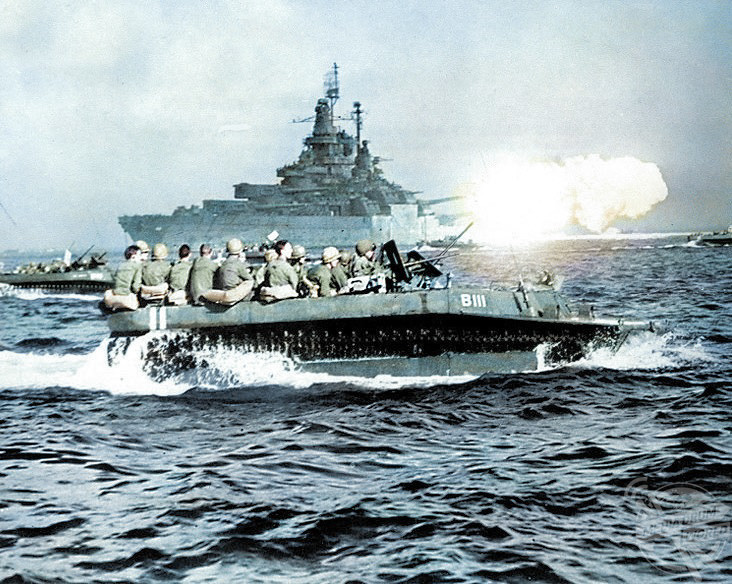
By early 1945, leapfrogging U.S. forces had advanced as far as Iwo Jima and Okinawa, within 340 miles of mainland Japan, at a great cost to both sides. On Okinawa alone, during 82 days of fighting, approximately 100,000 Japanese troops and 12,510 Americans were killed, and somewhere between 42,000 and 150,000 Okinawan civilians died as well.
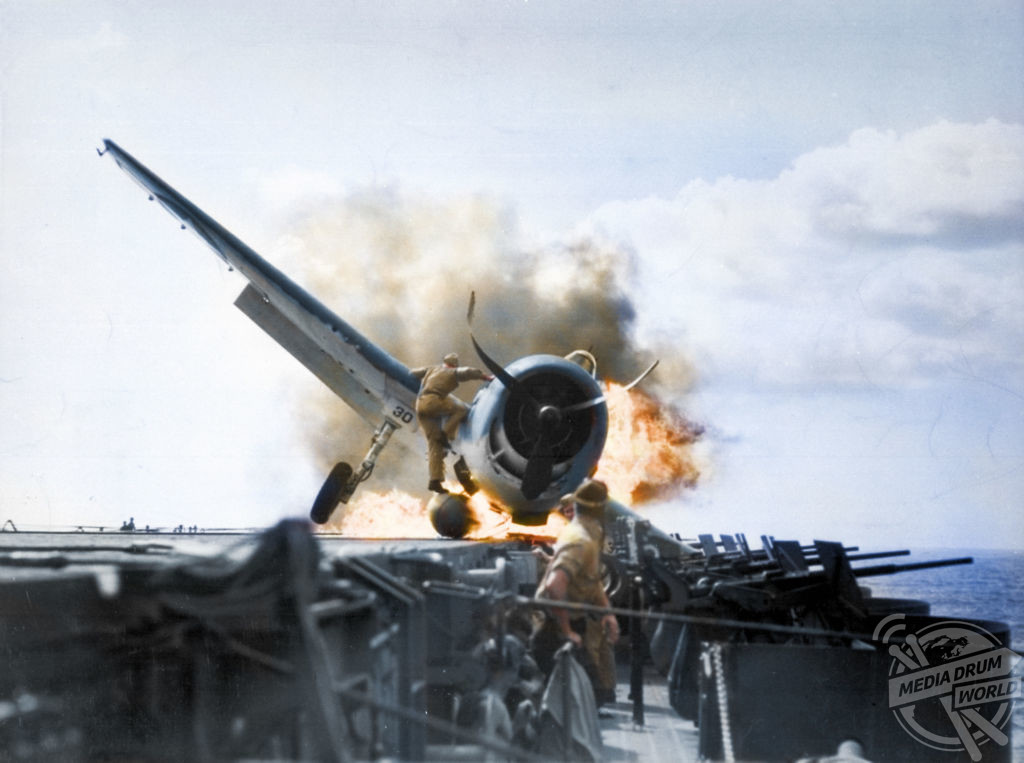
Eventually the war would cease after the United States detonated two nuclear weapons over the Japanese cities of Hiroshima and Nagasaki on August 6 and 9, 1945, respectively. It was the first time atomic weapons were used in warfare and resulted in the death of approximately 200,000 people (although estimates vary widely).
The exceptional images have been colourised by electrician Royston Leonard, 55, from Cardiff, who spends up to five hours working on each individual photo. He believes that photos ‘give more’ when they are in colour.






